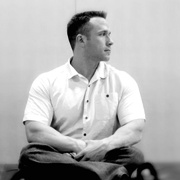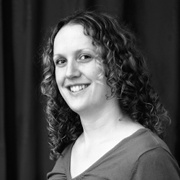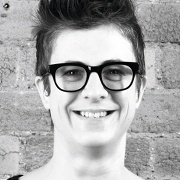Big question: how do you choose your clients?
We asked our expert panel what criteria they use to determine if a client is a good fit for them, and to tell us about times when they’ve regretted taking on a project

Rob Mills
Studio manager
bluegg.co.uk
Any client/agency relationship is a two-way thing. The agency must suit the client and vice versa. We usually meet clients a few times before projects get agreed, and by that stage we all understand each other and can determine if we are the right match. For us clients need to understand the 'Bluegg way', how we work and what we expect from them. Most of our clients come from referrals, and we can soon build relationships with them that turn to friendships. That's largely why I have no horror stories to tell other than the usual project issues around scope creep and budget management.
Rob Mills is studio manager of creative agency Bluegg

Shane Mielke
Creative director
shanemielke.com
As a part-time freelancer with a full-time job, projects and clients are qualified by several key factors. Deadline, budget and creative opportunity are all important things to weigh before taking on a project. Does the deadline work within the free time you have? Can you actually complete the job without killing yourself with all-nighters? Do you need the money for something you've been saving up for? Is the project actually paying what you're worth and is it enough to merit using evenings and weekends away from friends and family? Finally, is the project a unique opportunity to do something new? Will the project potentially make it into your portfolio and help you get more work in the future? Or is it something boring that you already have several examples of? The perfect magic unicorn client has a manageable deadline, huge budget and a unique project for you to stretch your wings creatively. Unfortunately there is a sliding scale and projects rarely match up in all three categories. The biggest paying projects have the worst deadlines and low creativity. The most creative opportunities have the smallest budgets and take up the most time. Make decisions based upon what you want and need at the time but never be afraid to pass on something that doesn't feel right.
Shane is designer and creative director at 2Advanced

Trent Walton
Founder of Paravel
www.paravelinc.com
There's only so much clients and contractors can learn about each other before projects kick off, and sometimes working relationships fail to evolve the way we'd like. I think building in the option to terminate contracts at any point (or at a few key intervals) for either party is wise.
We all have the tendency to want to see the job through to the end, but that shouldn't bind us to force something that simply isn't working out.
Trent is founder of Paravel

Mark Kirby
Mobile developer
mark-kirby.co.uk
Finding the right clients is always a challenge; until you have worked with someone it's difficult to know what type of client they will be. Someone who seems great at first inspection can quickly change once the project gets underway and pressures build up. One solution we use on large projects is to sign the client up to an initial short phase of work, rather than taking on the entire project all at once. This gives you and the client time to get to know each other before agreeing a large amount of work and getting into a situation that traps both parties.
Mark is a user-focused mobile developer

Lorna Mitchell
Freelance software consultant
www.lornajane.net
I like projects that are interesting and that I think are a good fit for my skills. The best projects I've ever been involved in are those where I actually made a difference!
I go for people who I think I can work with, or who need something I think I can provide, the more local the better. I'm also lucky to have my own products, books, training courses ... mixing things up keeps me energetic and engaged, and it's good to spend time away from client work sometimes.
People who argue about the price upfront very rarely turn out to be good clients, in my experience. Also clients who think they can pay my invoice sometime in the month after it goes overdue tend to find I get more expensive and less available in the future!
Lorna is a freelance software consultant

Gavin Elliot
Designer
www.gavinelliott.co.uk
The main criteria I look for are: What is the project? Will I find it fun? Do the clients have a good background?
And always try and have a chat with them over the phone. A lot of the time requirements and thoughts get lost over email, and until you can speak to them via Skype or phone you're only halfway there.
One time I didn't do enough investigating in to what the clients wanted personally out of the project, and become a little too excited with the prospect of working with them. It would have been challenging, as by the end of the project it was clear they didn't know either. I learned to dig deeper in to the motives behind the client requiring design, what they felt like they needed and what their business objectives were. These three things can bring about a much better understanding of whether the project and client are a good fit for you and your style of design and style of working.
Gavin is the founder of the Industry Inc conference

Abbie Walsh
Service Design Director, Fjord
www.fjordnet.com
If there is one universal factor in how we choose our clients, I'd have to say it is that we look for interesting opportunities where we can bring our deep service design expertise and our business pedigree to bear in ways that benefit not only our client, but their customers too.
Our design and business consultants collaborate with our clients to create breakthrough design solutions that help our clients firm up their business case and proposition definition. We can then help them create a backlog of briefs and a product roadmap. With input from our technology consultants, we help our clients work out how to implement that roadmap while our service design experts design the high quality experiences we've become renowned for. We look to work with clients that need help in this space.
I can only think of one time when a project didn’t work out, and it falls neatly within the space that I have just described. As soon as we dug into the opportunity space and started creating a breakthrough design for the client, they realised that they weren't internally set up for the change that would be required for them to pull it off. They had to stop the project; however it was our consultation process that helped the client come to terms with their internal shortfalls, which can be very valuable insight to both growing and established companies.
Abbie is Service Design Director and Deputy MD at Fjord
Get the Creative Bloq Newsletter
Daily design news, reviews, how-tos and more, as picked by the editors.

Andy Budd
Founder of Clearleft
www.clearleft.com
A lot of smaller agencies try to win every project that's presented to them, whether it's a good fit or not. This can be hugely problematic for a number of reasons.
From the agency perspective, it can result in working on projects that you don't enjoy, which aren't profitable and which you're not happy to put in your portfolio. This can lead to a negative feedback loop when you start attracting even more of the wrong clients.
I think this is one of the main reasons why designers are so fond of bitching about clients. It's not actually the clients' fault. The agency just failed to qualify them properly.
From the clients’ perspective, they end up hiring an agency that doesn't really understand their needs, doesn't fit with them culturally and feels like a constant battle to work with. The classic difficult designer. So the client ends up with a product they're not happy with and everybody is a loser!
At Clearleft we take great pains in getting to know out clients first. So we actually interview them as much as they interview us. The easiest way of doing this is to set up a quick call or arrange a meeting to sound them out first. For instance, do they value your expertise, share the same values and have similar expectations around project management? If not, it may make sense to walk away.
One of the best indicators is budget, so we always try to ascertain that as early as possible. After all there's no point getting to the third round of a seven way pitch only to find out that they can't afford you.
Another way of sounding the client out is to see what other agencies they are talking to. If they're of a similar size and calibre, they've probably done their homework. If you're the odd one out, you're probably not going to be right for them.
As a company we've been lucky enough to have only ever 'fired' one client. This was a very large and highly process-driven multinational. From the outset we didn't really understand why they were coming to Clearleft and felt they'd be better off with a team of project managers and business analysts instead rather than designers. However our client contact did an excellent job of selling us on the project. Six weeks in and our concerns were realised, so we got the project to a logical breakpoint and suggested that our client hire a slightly different agency to take things forward. While it would have been easy to blame the client in this situation, it was totally our fault for taking on the work despite our reservations. We won’t be making that mistake again.
Andy is managing director of Clearleft

Chip Hayner
Consultant, developer and designer
centresource.com
We are looking for clients that are seeking a partner, and not merely a contractor. When we have the ability to walk alongside our clients, making suggestions to help them reach their business goals, we find the projects to be much more successful and satisfying.
Chip is a consultant, developer and designer specialising in PHP development

Chris Coyier
Web designer
www.chriscoyier.net
There was a client we took on back in my agency days that turned out to be an incredible pain in the neck. Everything that could go wrong did. They didn't like the work we did for them, they didn't want to pay on time, they were needy and finicky and rude, but at the same time, rather helpless. What it boiled down to is that they were getting into a new business they didn't know anything about. They wanted to sell T-shirts to a niche audience but didn't bring anything to the table. They needed us to design the shirts, us to handle the printing, us to make the website, and ultimately wanted us to find customers. General advice: don't run a business for a client, be a part of making their business better.
Chris is a freelance web designer

Jonathan Smiley
Designer
www.zurb.com
When we're looking at prospective clients we look for three things: an interesting problem or challenge, a logistical fit (timing, etc) and most importantly an engaged, excited, scrappy team on the client side. In many cases when projects don't work out as well as we'd hope it's because of operational, bureaucratic problems that are minimised by teams who really want to get something great done quickly. For nimble teams iteration is key, and when they understand that, awesome stuff happens.
Jonathan is a design lead at ZURB

Whitney Hess
UX designer
www.whitneyhess.com
I can tell if a project is going to be worth my time from the very first communication I have with the client. If they talk about their work with passion and excitement, if they want to connect with me as one human being to another, if they are willing to invest their time and energy into making informed design decisions that will best serve their audiences' needs, then I know we're going to be a great fit. Whenever I feel a client is distant or disingenuous or rigid, I try to immediately disengage. Every time I've chosen to move forward despite my intuition – either because I'm flattered, I think the project will lead to better opportunities, or simply because I want the money – I've lived to regret it. Every painful client situation I've faced in the last decade was 100 per cent expected because of what the client taught me about who they are, both personally and as a business, in each interaction we had leading up to the breaking point. As time passes and I become more confident in my Spidey sense, I'm able to be much more honest (with myself and with others) about what I really want to take on. Money and prestige lose all value once you've given away your integrity. Do what you know is right for you even when it means you have to take a leap of faith ... and wait.
Whitney is an independent user experience designer

Thank you for reading 5 articles this month* Join now for unlimited access
Enjoy your first month for just £1 / $1 / €1
*Read 5 free articles per month without a subscription

Join now for unlimited access
Try first month for just £1 / $1 / €1

The Creative Bloq team is made up of a group of art and design enthusiasts, and has changed and evolved since Creative Bloq began back in 2012. The current website team consists of eight full-time members of staff: Editor Georgia Coggan, Deputy Editor Rosie Hilder, Ecommerce Editor Beren Neale, Senior News Editor Daniel Piper, Editor, Digital Art and 3D Ian Dean, Tech Reviews Editor Erlingur Einarsson, Ecommerce Writer Beth Nicholls and Staff Writer Natalie Fear, as well as a roster of freelancers from around the world. The ImagineFX magazine team also pitch in, ensuring that content from leading digital art publication ImagineFX is represented on Creative Bloq.
